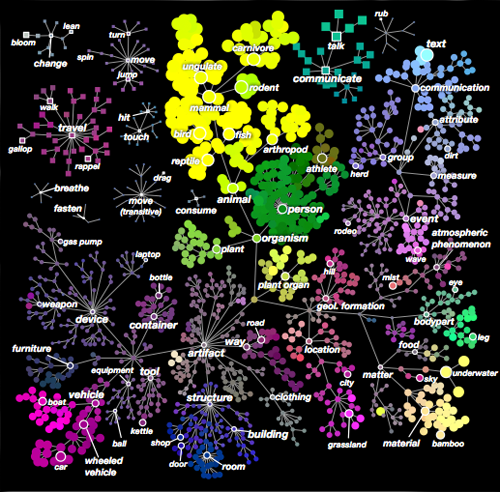
This is one of those moments in science that makes me think I’m so lucky to be alive right now. A team of scientists at UC Berkeley have found a way to map the brain’s representations of objects into a shared semantic space— a multidimensional space in which related things are nearer than unrelated ones. And there’s reason to believe this might be not just a semantic space, but the semantic space: they ran their test on five different people, and found that the first four dimensions of this semantic space were the same for all five subjects–dimensions easily labeled with ideas like moving/stationary, man-made/natural, animate/inanimate, and so on. In other words, the brain’s way of relating different objects might be something we all share at much more than a superficial level. This alone is pretty mind-blowing to me.
As if that weren’t enough, they’ve also created a very cool interactive visualization that shows how all of this plays out on the surface of an actual brain. (That page requires WebGL and a lot of memory, so if you’re reading this on an older device, you might want to just watch the video instead. Actually, you should watch the video anyway, because it’s really well done!)
Go science!
